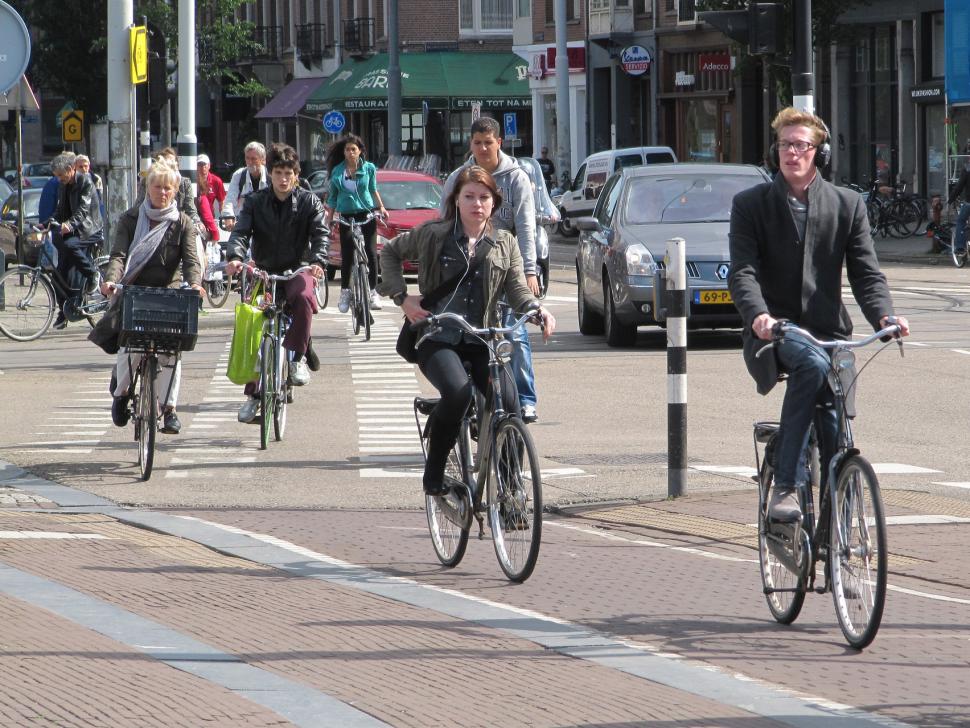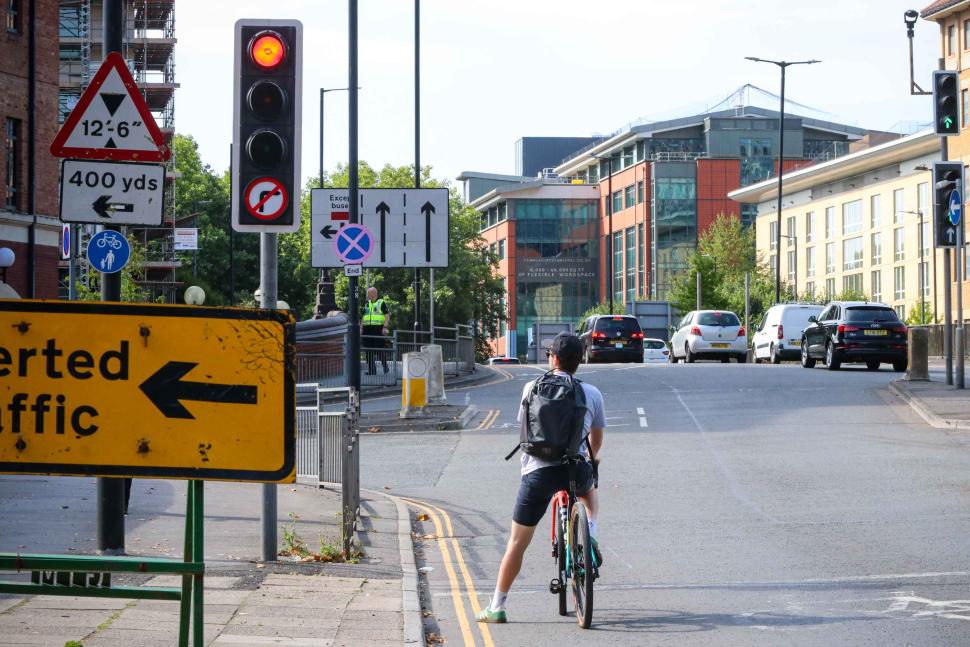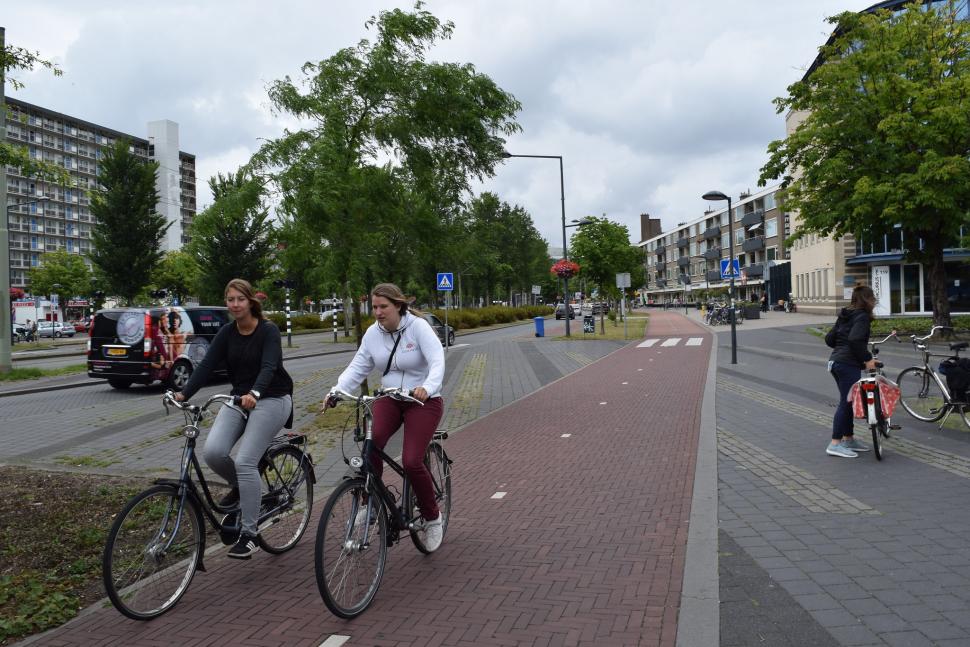The Dutch government is investing up to €1 billion in cycling infrastructure to connect hundreds of homes nationwide.
The investment is part of a broader package of €2.5 billion, which will fund the construction of roads, cycle paths, tunnels and tram lines to the new homes.
€1.3 billion of this is earmarked for projects before 2030, which includes more than €64 million for the VeluweWaalpad, a continuous cycling route connecting Arnhem and Nijmegen.
 Better facilities, like these in the Netherlands, would encourage people to cycle more (credit: CC BY-NC-SA 2.0 licenced by MarkA:Flickr)
Better facilities, like these in the Netherlands, would encourage people to cycle more (credit: CC BY-NC-SA 2.0 licenced by MarkA:Flickr)
A further €43 million will go to municipalities in the Gelderse Vallei region to encourage people to cycle between Ede, Rhenen, Veenendaal and Wageningen.
The country aims to build 100,000 new homes per year to counteract the housing crisis, and will have integrated sustainable transport from the outset.
“You can’t just build a neighbourhood and then figure out how people will get to and from it,” Chris Bruntless, International Relations Manager at the Dutch Cycling Embassy, told Zag Daily.
“We have to develop the housing plans and collaborate with the transport sector at the same time. This is something the Netherlands does remarkably well.”
In contrast, recent emergency rules in the UK to encourage housebuilding and counteract the housing crisis have allowed reduced requirements for the building of cycle parking.
The rules, announced by the UK government and the Mayor of London, allowed developers to pay financial contributions instead of building bike storage, or are able to build the storage off-site, to avoid “costly requirements”.
 Commuter stopped at red light.jpg (credit: road.cc)
Commuter stopped at red light.jpg (credit: road.cc)
It has also been reported that the UK government plans to reintroduce a spending cap on purchases made as part of the Cycle to Work scheme.
Sources familiar with the budget, which will be unveiled at the end of the month, told the Financial Times that the Conservative decision to lift the scheme’s previous £1,000 cap in 2019 was not the best use of public funds.
One source concluded that “taxpayers shouldn’t be footing the bill for luxury leisure.”
Cycle to Work Alliance said in a statement to road.cc regarding this news, “In 2019 a spending cap of £1,000 was abolished, as it was preventing people from being able to access the equipment they needed for everyday commutes. By effectively excluding e-bikes and adapted cycles from the scheme, the cap discriminated against older people and those with disabilities.”
However, the national investment from the Dutch government will largely be focused on cycle highways connecting rural villages and suburban areas with metropolitan centres, providing access to jobs, healthcare and education.
 Commuters on a segregated cycle lane 4.jpg (credit: road.cc)
Commuters on a segregated cycle lane 4.jpg (credit: road.cc)
Bruntlett emphasises that accessibility in terms of access to opportunity, housing, jobs, healthcare, and education is a priority.
“The bike, train and car are three ways we can access opportunity. But in the Netherlands, there’s an understanding that not everybody can afford a car and not everybody wants to use a car,” he said.
“If we’re to provide housing that’s affordable to everyone, accessible and sustainable, then we must invest in cycling and public transport. This time, it’s a €1 billion investment just for cycling.
“That’s a pretty big statement of intent as to what kind of transport the Netherlands wants to encourage at a national level.”
 Commuters on a segregated cycle lane 1.jpg (credit: road.cc)
Commuters on a segregated cycle lane 1.jpg (credit: road.cc)
As Bruntlett emphasises, a €1 billion investment from the Dutch government shows that it considers cycling and active travel to be a priority.
In February 2025, the UK government pledged £291 million to a national active-travel scheme projected to enable 30 million extra walking or cycling trips annually.
However, Cycling UK’s report from February revealed that just 2% of the transport budget in England goes towards active travel infrastructure. It was estimated that outside of London, this was as low as £1 per person spent per year.
 Train station cycle rack signage 2.jpg (credit: road.cc)
Train station cycle rack signage 2.jpg (credit: road.cc)
The Dutch government also plans to invest in cycling infrastructure and train networks, with secure bike parking at railway stations for first and last-mile connectivity.
This contrasts to the recent news that bikes stolen from train stations in the UK that were left for more than two hours would not be investigated.
Bruntlett went on the explain that due to the nation’s “systemic” approach, it is difficult to exactly know how much is spent on active travel and cycling in the Netherlands.
“Cycle paths are often built as part of standard road projects rather than as separate add-ons, so it can be difficult to parse out exactly what counts as cycling investment.”
